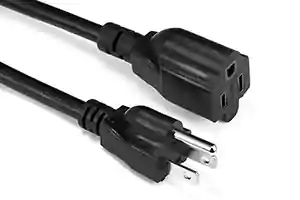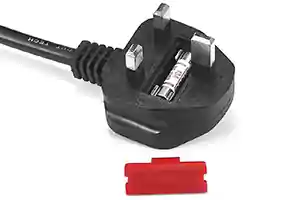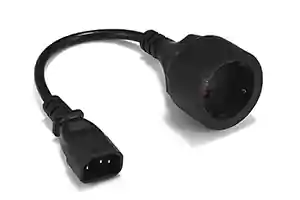According to government figures, electrical fires account for 20% of firms worldwide. There are several common causes of fires, and defective electrical outlets are the source of significant risks.

Table of Contents
Pulling out a wall outlet
Although it may seem brutal and impossible, pulling out an electrical outlet is common. This is mainly in social housing, where many people circulate and in dilapidated facilities.
The real question is: how do you unplug your devices?
Many users pull on the socket without holding the holder, and this phenomenon is mainly encountered on the sockets used to plug in the vacuum cleaner.
What happens when you pull on an electrical outlet?
You will exert significant pressure on the fixing system if you pull on the socket without holding the plinth in the wall. It can be a claw or a plastic box fixed on the wall, which is a long-term effect.
Little by little, the claw or the fixing will lose its effectiveness. Materials like plaster will deteriorate with every effort, and you will eventually tear the block completely out of the socket.

At this point, you will have to have luck on your side so that the consequences are not dramatic. When you pull out the plug, there is a high risk that the power wires will come loose from the fixing points, and they could then touch each other and cause a short circuit.
A short-circuit causes a sudden and instantaneous increase in current, immediately igniting neighboring materials. An old installation could also end badly damaged wires in a wall or even blow up a circuit breaker that would have called for replacement much sooner. Defective electrical outlets could then present significant risks to your safety.
Bad contacts in an electrical outlet
Bad contacts are a common thing in electrical installations. Unfortunately, this can have disastrous consequences for housing and its inhabitants. A bad contact does not allow an optimal flow of current.
As your device will consume a certain power related to its mode of use, the current that is established will have to pass through the contact no matter what. If this is bad, then there will be heating of the metal parts of the contact. For example, with prolonged use and a strong current, as for an oven or a water heater, heating can lead to a fire.
It is also possible to create a simple breakdown to a lesser extent. The contact could no longer work at all, and your socket would be inoperative. It is problematic but less dangerous than fire; you do not know the origin.
Bad plug connection
After an intervention or in a housing that has just been rehabilitated, it is also possible to encounter an error in your socket connection. Unless you test each point of use, you won’t see this problem until later, but the risks are genuine.
It is common to see that the earth conductor is not connected. The problem? This allows the establishment of a leakage current and, therefore, detection by a differential circuit in your switchboard. Your device does not risk anything, but you will not be protected in the event of an electrical fault.
An individual without electrical knowledge should never intervene in his installation, but the case is far too common for us not to tell you about it. This flaw is extremely dangerous, but it is impossible to detect unless you test all of your outlets.
If you plug in a device and it doesn’t work, there are plenty of options available to you to explain this problem. The easiest way is to test the other outlets in the room first. Indeed, the electrical outlets are often grouped by parts in an installation. Because of this, if the other outlets are working, you will know the circuit is good, but your outlet has a fault.
The error is sometimes to have connected the phase to the earth pin. This is very dangerous because, in this case, the phase becomes accessible directly from the outside of the socket. You will then have to cut off the power and modify the connection.
How to connect an electrical outlet?
Connecting an electrical outlet is easy, especially if you have the manufacturer’s instructions. The symbols change depending on the manufacturer, but you will have to find your bearings according to the colors of the threads.

The blue wire represents the neutral. Black or brown is the phase, and yellow-green is the earth conductor. A trading rule is that the neutral is on the left when looking at the socket. You will then have the phase on the right and the earth pin on the upper part of the socket.
How is an electrical overload created?
An overload is the flow of too much current through wires or connectors in a circuit, and it is one of the common causes of electrical fires.
We never have enough outlets to plug in all of our devices in our homes. This is particularly true behind the TV cabinet, where you have to connect TV boxes, game consoles, home cinema, and other equipment as appropriate. A magic tool then appears, the power strip. With this, you can plug in a host of devices simultaneously, but have you estimated their power consumption correctly?
How many devices can I plug into one outlet?
Indeed, an outlet is made to withstand 16 A. It is also the circuit breaker rating that protects your circuit in your electrical panel. A simple calculation shows that this maximum current can transport 3600 W per outlet. Therefore, it will be necessary to add the power of each device activated simultaneously.
For example, if you have two game consoles, only one will be on at a time, so only take the one that consumes the most. Most fires caused by overloading occur during a backup installation.
In the middle of winter, add an electric heater to cope with a spike in the cold, or plugin an additional oven for an evening with friends. It is often in this case that an overcurrent occurs, and the fire breaks out.
How to avoid defective electrical outlets?
The best protection will always be your behavior. As a first step, always hold the outlet base before removing your device from its power supply, and this will avoid the problems and risks associated with pulling out a plug.
To avoid the risk of a defective electrical outlet, avoid plugging many devices into a single outlet simultaneously. Be careful, as the outlet circuits are often grouped by rooms, meaning that separating your devices on the different outlets in a room will not solve the problem.
The circuit breaker to protect its outlets
A thermal-magnetic circuit breaker will protect your defective electrical outlets against the risk of overloads and short circuits. You will be able to have a clear conscience, even for the risks represented by faulty sockets.
A circuit breaker should be selected based on the amperage that will flow through the circuit. The standard for conventional sockets imposes 16 A, but you can also have 20 A or 25 A circuit breakers for your water heater or your cumulus.
Choose circuit breakers from major brands known for their reliability. This is about your safety, and the role of the circuit breaker will be to open the circuit. Even if an enormous current is flowing, it is necessary to have equipment capable of handling such high energy.
Now It’sIt’s Your Turn
So that is how I understand Defective electrical outlets: what are the risks?.
Now I want to turn it over to you: Through my article, do you understand the risk of defective electrical outlets?
Do you have a different point of view with the defective electrical outlets? Or any other questions?
Let me know by leaving a quick comment below right now.




